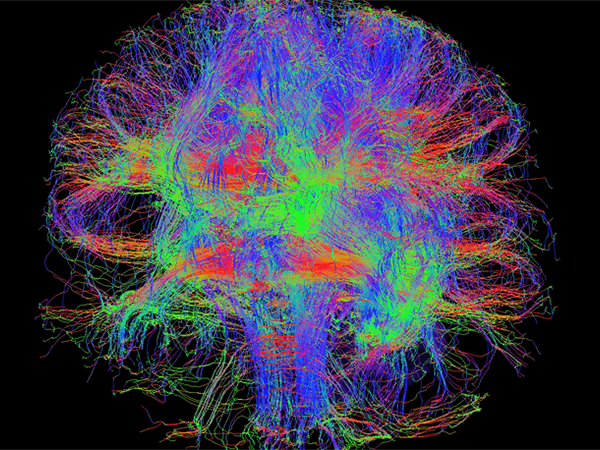Researchers Examine Brain Architecture Using fMRI
Images

An innovative approach to studying brain connections using functional magnetic resonance imaging (fMRI), recently published in Cell Systems, introduces a new way of understanding brain architecture through dynamic functional networks, challenging the traditional static approach. The researchers were from the Institute for Neurosciences (IN), a joint center of the Spanish National Research Council (CSIC) and the Miguel Hernández University (UMH) of Elche, along with a team from the Transylvanian Institute of Neuroscience (Romania), and in collaboration with experts from the Universitat Politècnica de València.
The study has revealed that delays in communication between brain regions are crucial to understanding the organization of functional networks. Unlike conventional methods that average a single static network, the team used an approach that studies the temporal evolution of connection strength, analyzing their statistical distribution rather than their average activation. This has allowed them to discover a brain architecture that is both robust and dynamic.
The connection speed between brain regions and integration times are variable, which introduces communication delays. Our objective has been to incorporate these delays into the analysis of functional connectivity to develop a more precise and sensitive method," said Santiago Canals, researcher, Brain Networks Pasticity laboratory at the IN.
The results of this research reveal the existence of a functional backbone formed by robust, delay-free interactions, complemented by a large number of weaker connections whose strength fluctuates over time, adding flexibility to the brain's functional architecture. "This dynamic approach better captures the brain's constantly changing reality. It has enabled us to obtain comparable results in rats, marmosets, and humans, with extraordinary consistency when the same subject is scanned repeatedly over time, which is uncommon in the field of magnetic resonance," Canals emphasizes.
One of the most significant discoveries of the study is the identification of the "backbone,” a set of robust and stable functional connections that serve as the core of communication in the brain. Although these connections represent less than 10% of all those studied, they play a crucial role in the overall cohesion of brain networks, maintaining robust connectivity that ensures efficient communication between different regions.
"Efficiency in network communication is dramatically reduced when these connections are compromised, underscoring their importance in the brain's functional structure. Meanwhile, the weaker and more dynamic connections amplify the system's potential functional states, providing flexibility," concludes Canals.
To conduct this study, scientists used fMRI data from rats, non-human primates, humans, and patients with alcohol use disorder. These findings open new avenues for identifying more precise and sensitive brain biomarkers capable of detecting subtle alterations in neuronal networks, which could have significant implications for diagnosing neuropsychiatric diseases.
These results were made possible through a joint international collaboration that brought experts from various fields together. Canals emphasizes that the research was only possible with a multidisciplinary team. The laboratory led by Maria Ercsey-Ravasz at the Transylvanian Institute of Neurosciences (TINS) has extensive experience in the physics of complex networks. At the same time, Raul C. Muresan's lab at the same institution focuses on developing advanced tools for time series analysis. David Moratal's group from the Center for Biomaterials and Tissue Engineering (CBIT) at the Universitat Politècnica de València also contributed to the study.